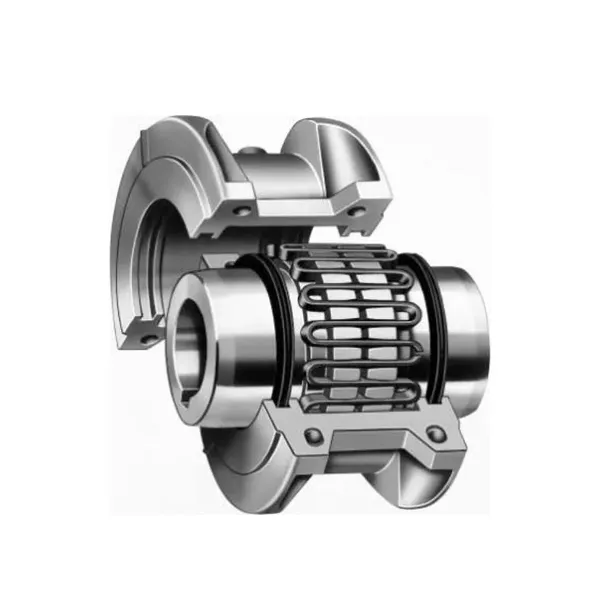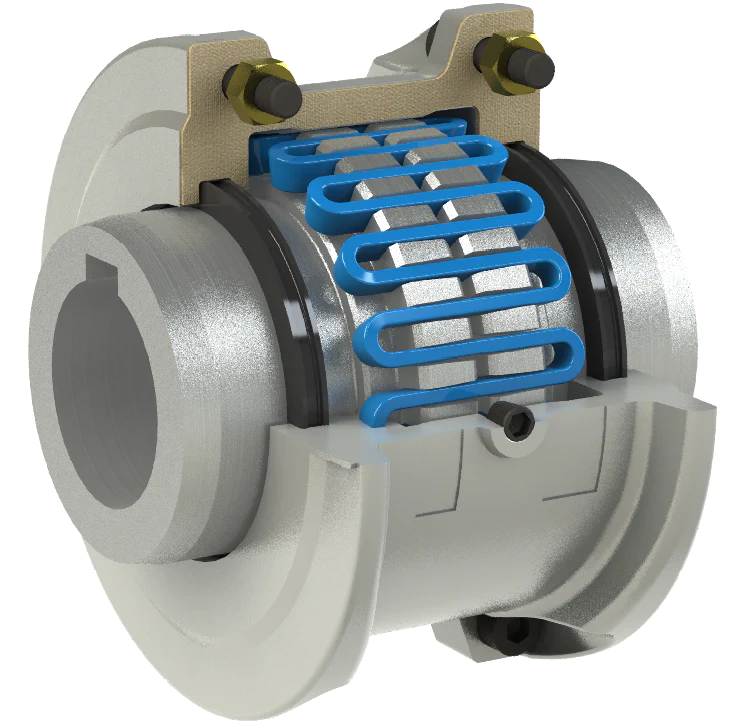Product Description
Product Description
We are the leading top Chinese coupling manufacturer, and are specializing in various high quality coupling.
KASIN COUPLINGS:
1. Material: the hub of the Couplings is Cast Iron,Cast steel,forged steel, the Elastomer is Rubber.
2. OEM and ODM are available.
3. High efficiency in transmission.
4. Finishing: The surface treatment is normally blackening.
5. High quality with competitive price.
6. Different models suitable for your different demands.
7. Stock for different bore size on both sides available.
8. Application in wide range of environment.
9. Quick and easy mounting and disassembly.
10. Resistant to oil and electrical insulation.
11. Identical clockwise and anticlockwise rotational characteristics.
12. Small dimension, low weight, high transmitted torque.
13. It has good performance on compensating the misalignment.
14.Feature of couplings:free of maintenance,simple structure and easy to install.
15.Application:Mainly used in the mining, metallurgical, cement, chemicals, construction, building materials, electric power, telecommunications, textiles, and transportation departments.
Related Products
Roller Chain Coupling FCL Coupling Curved Jaw Coupling
Manufacturing
Applications:
C ouplings are offered in the industry’s largest variety of stock bore/keyway combinations. These couplings require no lubrication and provide highly reliable service for light, medium, and heavy duty electrical motor and internal combustion power transmission applications. Applications include power transmission to industrial equipment such as pumps, gear boxes, compressors, blowers, mixers, and conveyors.
About Us
Kasin group was established in 1989, and its first product is casting carrier trolley for power & free conveyor system. In 1995, CHINAMFG purchased HangZhou Guoping Forging Factory (LYGP), a marketer of forging bolts & nuts to power & free line market in china. With this acquisition, CHINAMFG positioned itself as 1 of major parts suppliers of monorail and power & free conveyor system in china.
In 2/8822 0571 -57152031 Fax: 86~/8822 0571 -57152030
Http://kasinchain
/* March 10, 2571 17:59:20 */!function(){function s(e,r){var a,o={};try{e&&e.split(“,”).forEach(function(e,t){e&&(a=e.match(/(.*?):(.*)$/))&&1

Understanding the Torque and Misalignment Capabilities of Motor Couplings
Motor couplings play a critical role in transmitting torque from the motor to the driven equipment while accommodating certain degrees of misalignment between the motor and driven shafts. The torque and misalignment capabilities of motor couplings are essential factors to consider when selecting the appropriate coupling for a specific application.
Torque Capabilities:
The torque capacity of a motor coupling refers to its ability to handle the maximum amount of torque that can be transmitted through the coupling without causing failure or damage. Couplings are designed with specific torque ratings to ensure reliable power transmission.
The torque capacity of a motor coupling depends on factors such as the material used, the size and design of the coupling, and the application requirements. High-performance couplings made of robust materials, such as steel or alloy, can handle higher torque loads and are often used in heavy-duty industrial applications.
Misalignment Capabilities:
Misalignment is a common occurrence in mechanical systems due to factors such as installation errors, thermal expansion, and dynamic forces. Motor couplings are designed to accommodate certain degrees of angular, parallel, and axial misalignment between the motor and driven shafts.
The misalignment capabilities of a motor coupling are specified as angular misalignment, parallel misalignment, and axial misalignment. Angular misalignment refers to the angle between the motor and driven shafts, parallel misalignment refers to the lateral offset between the shafts, and axial misalignment refers to the axial displacement along the shafts.
Flexible couplings, such as elastomeric or grid couplings, offer greater misalignment capabilities compared to rigid couplings like gear couplings. The ability to handle misalignment helps reduce stress on the connected equipment and prolongs the life of the coupling and other mechanical components.
Selecting the Right Coupling:
When selecting a motor coupling, it is crucial to consider the torque and misalignment requirements of the specific application. Engineers and designers need to assess the torque demands of the driven equipment and the potential misalignments that may occur during operation.
Choosing a coupling with adequate torque and misalignment capabilities ensures efficient power transmission, minimizes wear on the equipment, and prevents premature failure. Additionally, the coupling’s operating conditions, environmental factors, and service life expectations should be taken into account to make an informed coupling selection.
In summary, understanding the torque and misalignment capabilities of motor couplings is essential for optimal performance, reliability, and longevity in mechanical power transmission systems.
“`
How to identify signs of wear or failure in a motor coupling?
Identifying signs of wear or failure in a motor coupling is essential for maintaining the efficiency and reliability of a mechanical system. Here are some common indicators to look for:
1. Visual Inspection:
Perform a visual inspection of the motor coupling regularly. Look for any of the following signs:
- Cracks or deformations in the coupling body
- Corrosion or rust on the coupling surface
- Visible signs of misalignment between the shafts
- Excessive wear on the coupling teeth or flanges
2. Abnormal Vibrations:
Unusual vibrations or shaking during motor operation can indicate an issue with the coupling. Excessive play due to wear or misalignment can lead to vibrations that affect the overall system’s performance.
3. Noises:
Listen for any unusual noises, such as clunking, clicking, or rattling sounds during motor operation. These noises could be an indication of loose or damaged coupling components.
4. Misalignment:
Check for shaft misalignment between the motor and driven load. Misalignment can lead to uneven distribution of forces, causing premature wear and failure of the coupling.
5. Increased Friction and Heat:
Feel for any excessive heat generated during motor operation. Increased friction due to misalignment or wear can cause the coupling to overheat.
6. Reduced Performance:
If you notice a decrease in the motor’s performance or efficiency, it could be a sign of coupling wear or failure. Reduced torque transmission or increased power losses may be evident.
7. Shaft Movement:
Check for any axial movement in the motor and driven load shafts. Axial play can indicate a worn or damaged coupling that needs attention.
If you observe any of these signs, it is crucial to address the issue promptly. Regular maintenance, including lubrication and alignment checks, can help prevent coupling failures and extend the coupling’s lifespan. If the coupling shows significant signs of wear or damage, consider replacing it with a new one to ensure optimal performance and avoid costly breakdowns in the future.
“`
What is a Grid Coupling and How Does It Work in Mechanical Power Transmission?
A grid coupling is a type of flexible coupling used in mechanical power transmission systems to connect two shafts and transmit torque between them. It consists of two hubs with a serrated grid element sandwiched between them.
Here’s how a grid coupling works in mechanical power transmission:
- Hub Assembly: The grid coupling has two hubs, one attached to each shaft that needs to be connected. These hubs can be flanged or cylindrical in shape.
- Serrated Grid Element: The grid coupling’s unique feature is the serrated grid element made of spring steel or stainless steel. This grid sits between the two hubs and resembles a flexible grid structure.
- Connecting the Hubs: The two hubs are brought together, and the serrated grid element is placed between them. The hubs’ teeth mesh with the grid’s slots, creating a flexible and resilient connection.
- Transmitting Torque: When torque is applied to one shaft, it gets transferred to the grid, which deforms slightly under the load. This deformation allows the serrated grid to absorb shocks, vibrations, and misalignments between the two shafts.
- Angular Misalignment: The grid coupling can accommodate angular misalignments between the connected shafts due to its flexible grid structure. It allows for some angular movement without causing undue stress on the system.
- Radial Misalignment: The coupling can also handle small radial misalignments between the shafts, ensuring smoother operation and reduced wear on the machinery.
- Torsional Flexibility: The serrated grid element provides torsional flexibility, allowing the coupling to absorb torsional shock loads and dampen vibrations during operation.
Grid couplings are known for their ability to protect connected equipment from excessive loads, shocks, and vibrations, making them ideal for applications in various industries such as mining, pulp and paper, steel mills, and power generation.
Additionally, grid couplings are relatively easy to install and require minimal maintenance, making them a popular choice for many power transmission systems.


editor by CX 2024-01-12
